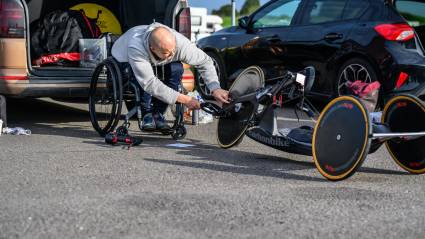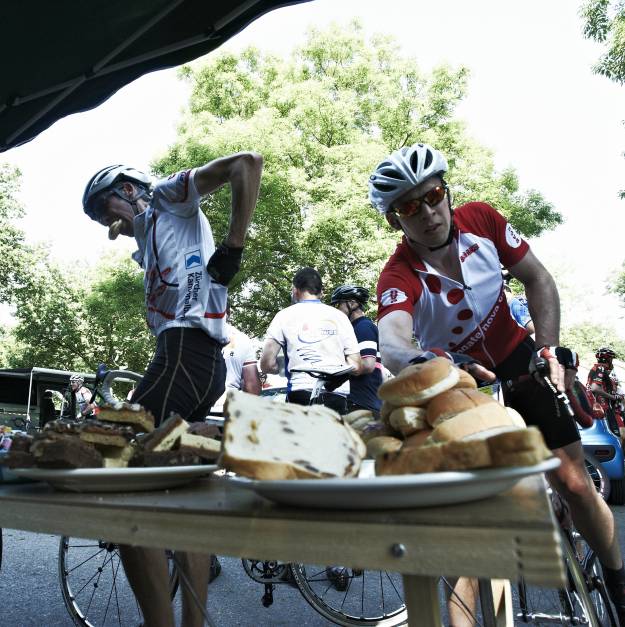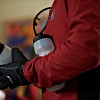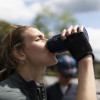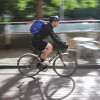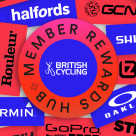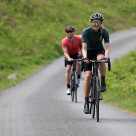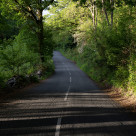One of the best ways to get quicker on the bike, especially on hills, is to drop a few pounds. It is no coincidence that when Grand Tours hit the mountains, the riders leading over the cols are all whippet thin. However, for many riders who are diligently following a training plan, commuting daily, getting out for big weekend rides or suffering on the turbo, the scales refuse to move or even go in the wrong direction.
You can’t out ride your diet
Unfortunately cycling, or any exercise, isn’t free rein to be able to eat whatever you want. Even if you are putting in 10 hours plus each week on the bike, it takes depressingly few biscuits, cakes or takeaways to nullify the calories you have burnt while riding. You are probably looking about 10 minutes of riding per chocolate digestive and more than two hours for a typical Indian takeaway. Exercise is certainly a key component in healthy weight loss but, without keeping a close eye on your diet, isn’t enough on its own.
Do the maths
Weight loss, despite what some diet plans would have you believe, is as simple as calories in versus calories out. Some simple sums can show why cycling might not be having the impact on your waistline you are hoping for.
Let us look at a theoretical Sunday Club Run:
We will be fairly generous, assume the ride was fairly feisty and, over 3 hours, our rider burned 1800 calories. During the ride he fuelled well, taking in:
X3 gels : 342 calories
X1 bar : 250 calories
X3 500 ml sports drinks : 120 calories
At the café stop he treated himself to a slice of victoria sponge (“well, it was a brisk 3-hour ride”) and a skimmed milk latte (“trying to shift a pound or two”): 350 calories
Once home, he had a recovery drink: 250 calories
So, his total calorie intake for the ride was 1552 calories resulting in a fairly low net deficit of 248 calories. To lose a pound of fat requires a weekly deficit of 3500 calories or 500 calories per day.
So our rider, despite his efforts on the bike, is still 252 calories short of this goal and, if he has also had a big pre-ride breakfast, has a decent post-ride lunch and then has a big dinner, as he has done a good ride, he could easily end up with a calorie surplus.
Yes, he maybe could have skipped the cake, cut out a gel and bottle of energy drink and maybe not bothered with the recovery drink but he was riding fairly hard and would have needed the fuel and his intake certainly wasn’t above and beyond what a lot of riders consume.
Over estimating calorie burn
Although it can be fairly easy to track calories going in, that is only part of the equation and calories going out are far harder to accurately calculate.
First, you have to know your Basal Metabolic Rate (BMR). This is the number of calories you require just to exist at rest and, although there are on-line calculators that factor in age, height, weight, gender and activity level, they still only produce an estimate.
Next, you need to know how many calories you are burning on the bike. There are three main practical based methods for doing this:
This first is using a power meter. One of the key bits of data a power meter produces is the amount of work done in a ride which is expressed in kilojoules. Kilojoules convert to calories at a rate of 4.186 kilojoules per calorie. However, because we are fairly inefficient at converting our food energy into pedal power, losing about 75-80% to heat production, the actual ratio is approximately 1:1. There is some variation from rider to rider due to differing levels of efficiency but, in general, the accuracy for calorie burn calculated from power meter data is within 5%.
Next is using a heart rate monitor. The algorithms used to calculate calorie burn from heart rate have become increasingly sophisticated. The more hard data you can add, such as age, height, weight, gender, activity level, functional threshold heart rate (FTHR) etc, the more accurate the value you get will be. However, most heart rate based calculations are only 10-20% accurate.
Finally are estimates based solely on metrics such as time, distance, age, weight and activity level. With no input as to how hard you are actually working, you’re looking at an accuracy of between 20-60% off the mark.
To put this figures in perspective, here is the variance in calories burned for our theoretical Sunday Club Run.
Actual calorie burn: 1800 calories
Power meter (5%) : 1710-1890 calories
Heart rate (20%) : 1440-2160 calories
Activity estimate (60%) : 720-2880 calories
With so much scope for inaccuracy, knowing for certain that you are hitting that daily deficit of 500 calories is really hard. Going too low with your deficit can be as bad as going over it as it can easily push your body into a starvation state. This can result in your body holding onto its fat reserves and sacrificing lean tissue.
This doesn’t mean that tracking calories isn’t worthwhile, in fact it is probably one of the most effective ways to control weight but you have to be aware of the limitations of the data you are using to do so. The solution, rather than blindly following the numbers despite what your weight is doing, is to use them as a guide and then, by monitoring your actual weight changes, continuously tweak them. If your weight isn’t reducing over a couple of weeks, it is likely that your BMR estimate was inaccurate, you are not burning as many calories through exercise as you thought or even a combination of both. Reduce your daily calorie goal by a small amount, work to that new number for a week or two and see the effect it has. Keep refining your daily calorie target in this way and it won’t take long to find the number that is right for you.
The fat burning myth
A common mistake made by lots of cyclists who want to lose some weight is going out and riding at a low intensity in the so-called “fat burning zone”. Yes, at lower intensities, our bodies will draw predominately on fat reserves for fuel but, because the effort is so low, total calorie burn will be low also. It doesn’t matter what form, fat, carbs or protein, those calories take, if the balance is negative, you will lose weight. So, if you are looking to lose weight, forget about the fat burning zone.
This doesn’t mean going out and riding as hard as you can manage all of the time, solid steady paced endurance rides are still important but don’t fall into the trap of making all of your riding one paced.
Trying to combine dieting with training
Unfortunately, hard training and calorie restriction don’t go well together. Cycling, especially at higher intensities, requires fuel and, if enough fuel isn’t provided, the quality of and the progress yielded by training will be compromised. To lose weight, the best time to do it is during a period when your training load is relatively low and you aren’t focussing on high intensity sessions. The off-season is probably the best time to try and shed a few pounds.
Fuel the session
Another common mistake is to eat the same or similar every day regardless of the riding you are doing. For example, a big bowl of porridge is brilliant on the morning of a big ride but, if you’re not cycling that day or not doing a session until later in the day, it is not necessary. A less carbohydrate and calorie heavy breakfast, such as an omelette or yoghurt with fruit, would be more appropriate. Conversely, if you are riding hard and the quality of the session is your priority, it is important that you take on sufficient carbohydrates. At the same time as you plan your training, plan your diet so that it is appropriate to the riding you are doing.
The scales can lie
If you are exercising, especially if you are doing strength work, it is possible for your weight to remain static, or even go up, but you could still be losing fat. Conversely, if you’re being too aggressive with your dieting, the scales could be dropping but you could be losing valuable muscle mass. One of the simplest ways to check whether either of these scenarios apply to you is to either keep an eye on how your clothing is fitting or, if you want a bit more objectivity, take some measurements (chest, waist, hips and thighs). Monitor these along with your weight. Alternatively a qualified fitness professional at your local gym or health club should be able to take some skin-fold measurements for you. Make sure the same person repeats the measurements for you and, by comparing the total sum and individual skin folds, you can track the changes in your body composition. Be wary of scales and hand held devices that use bio-impedance to measure body composition as factors such as hydration level can significantly alter the results they give.
Medical reasons
If you think you have addressed all of the issues and common mistakes described in this and the previous article but are still failing to lose, or are gaining, weight, there are a number of medical conditions that can be responsible. Chronic stress, hypothyroidism and polycystic ovary syndrome (PCOS) are just a few examples. Also, some medications, especially steroids, that are prescribed for a number of conditions can also make weight loss hard. If you are confused or concerned about your weight loss issues you should consult with your GP.



